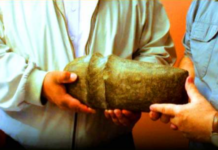
“The scriptures show the convincing power of nail prints in the hands of Christ. It is important to develop the Fibonacci Series and the Golden Spiral so as to show how the Hopewell used this framework to cut the mica sheet with precision and exactness.” John C. Lefgren. (See 3 Nephi 11: 13-17, Zechariah 13:6, John 20:24-29, and D&C 45:52). In July of 2018 Dr. John C. Lefgren of Bethlehem, PA was the person who first made the association of the Fibonacci Series to this Hopewell artifact which shows the nail print in the hands of Christ.
Of course this is a plausible possibility and I urge all to read, study and pray about this information. To me it makes sense and that is why I share it.
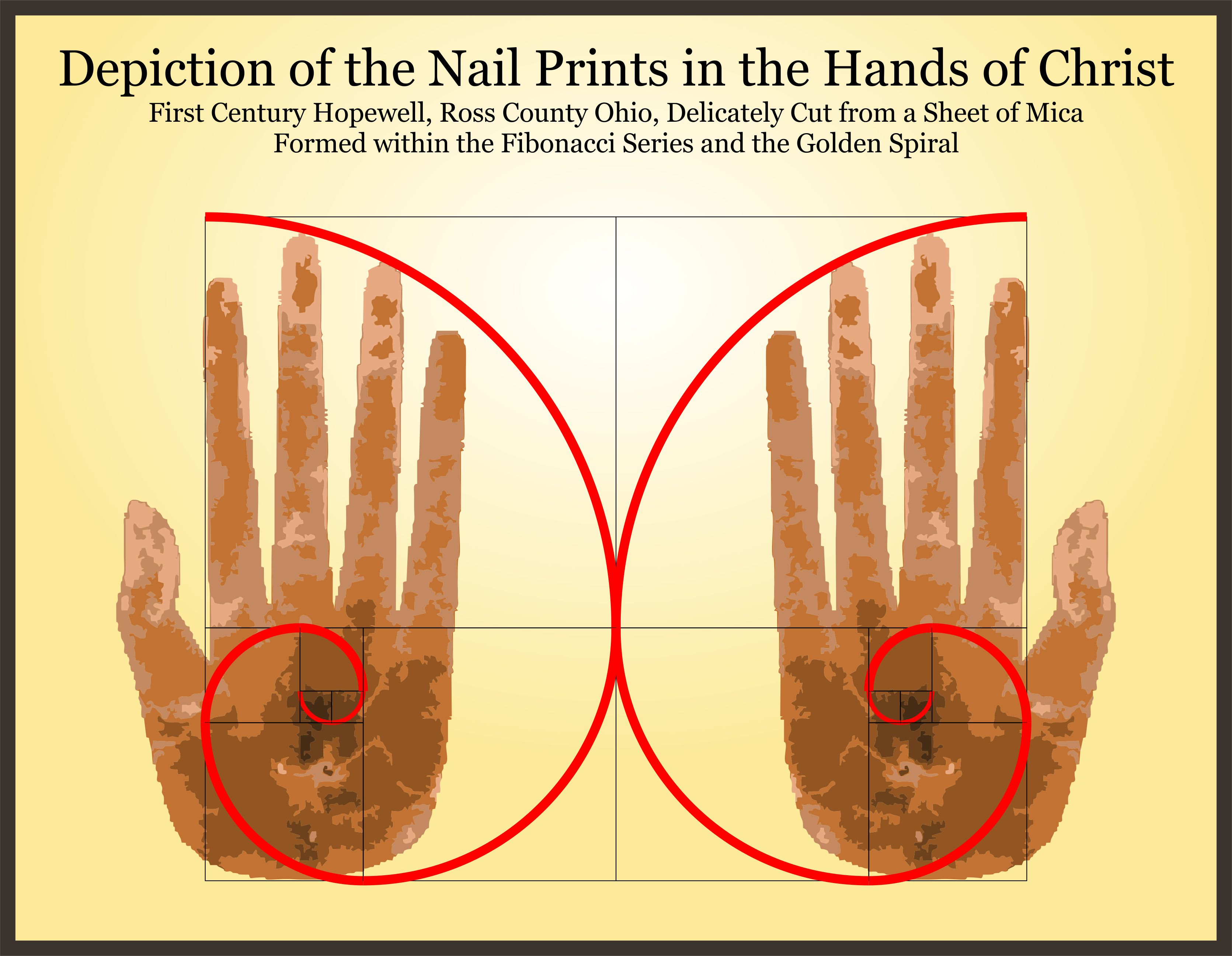
HOPEWELL EFFIGY OF A HUMAN HAND
“Effigy of a human hand cut from sheet mica, Ohio Hopewell culture, 100 BC-500 AD. Excavated from Hopewell Mound Group, Ross County, Ohio ca.1922-1925. The Hopewell obtained mica from western North Carolina. This object is 11” x 7” and is held in the Ohio History Connection Archaeology Collection. Hopewell culture spiritual leaders used small slabs of mica for a kind of mirror, possibly used in divination ceremonies, and artisans cut sheets into a variety of delicate shapes that may have been sewn onto garments to serve as personal ornaments. Around 400 A.D Hopewell culture began to decline for an unknown reason according to archaeologists.” Ohio History Connection Archaeology.
“In mathematics, the Fibonacci numbers are the numbers in the following integer sequence, called the Fibonacci sequence, and characterized by the fact that every number after the first two is the sum of the two preceding ones: 1,1, 2, 3, 5, 8, 13, 21, 34, 55, 89, 144… Fibonacci numbers appear to have first arisen in perhaps 200 BC in work by Pingala on enumerating possible patterns of poetry formed from syllables of two lengths.” Wikipedia (To understand the Fibonacci, see videos at the end of this blog)
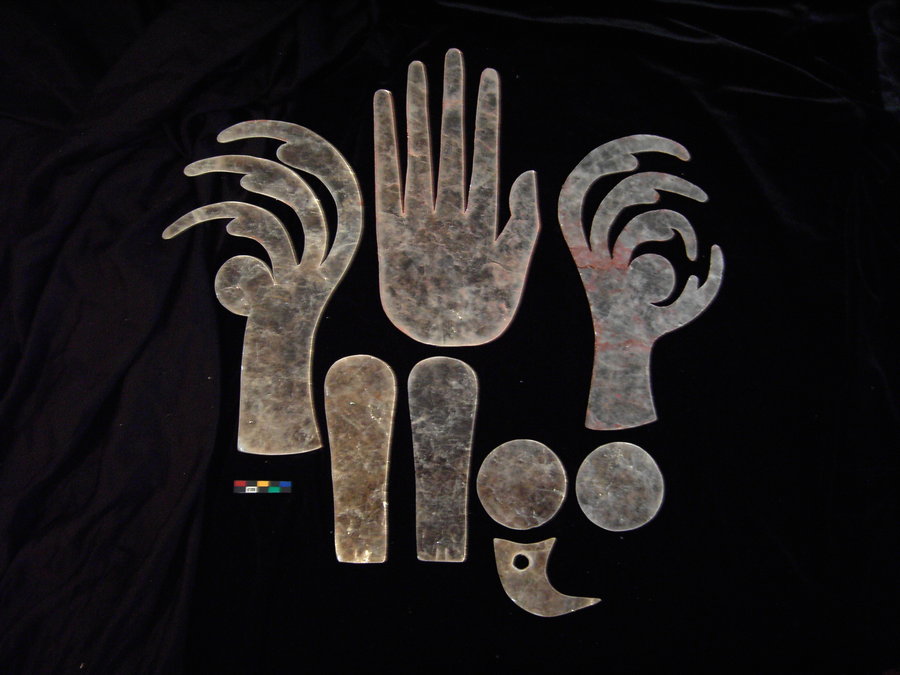
“Mica cutouts were produced by the Hopewell culture (100 BC-AD 400) which thrived in the American Midwest and southern Ohio more than two thousand years ago. The artifacts that the replicas pictured (left) were based upon, were excavated from a double burial in Mound 25 that was part of a complex of earthworks known as the Hopewell site. The site name honored Mordecai C. Hopewell who in the 1800s owned the farm which the 44.5 hectare (110 acre) mound complex was located. Since excavations on the Hopewell site produced artifacts that were previously unknown, the culture was also named after Hopewell. Complex geometric earthworks, some the largest in the world, were a trademark of the Hopewell culture. Usually Hopewell mound complexes comprise of very regular geometric shapes: a combination of circular, square and octagonal earthen walls that lined the site perimeter. The Hopewell site is unusual in that it has a mound geometry that is irregular in shape. The site has two orthogonal walls on the south and east sides with a j-shaped curve forming the remaining north and western walls. There is however a smaller square walled complex sharing the eastern wall of this larger complex that conforms to the classic Hopewell plan. A survey of the Hopewell site in 1847 described more than 20 smaller mounds within the enclosure of the perimeter walls. Many contained multiple burials with abnormally large amounts of burial objects.
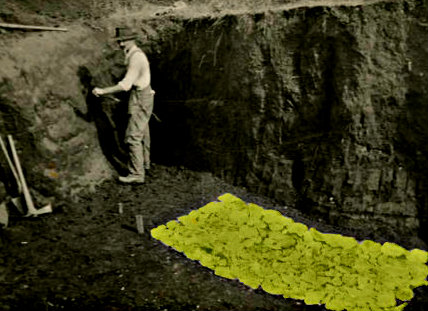
In 1891, Warren K. Moorehead was employed by Harvard University to excavate the site. His methods have been described euphemistically as “cavalier” by modern standards. Mosaics of colored sand, one represented a panther, were uncovered and then destroyed as his investigation cut through stratigraphy of the mounds. Mound 2 had 8,000 palm-sized discs of flint, about 5.4 metric tons (6 tons) uncovered. He must have been overwhelmed by the shear number of artifacts for a famous picture taken at the time (below)  showed these discs recklessly piled outside one of his field camp tents. Mound 17 had 3,000 sheets of mica excavated, “enough to fill two barrels”. The same mound had 5,000 copper objects, of which Moorehead thought 4,000 were copper ear spools, 100 were breast plates, and another 120 were “cut into numerous designs”. He also found in Mound 17 by his estimates over 100,000 fresh water pearls from the various species mussels and clams that inhabit Ohio streams (they were at the time worth one million dollars).
showed these discs recklessly piled outside one of his field camp tents. Mound 17 had 3,000 sheets of mica excavated, “enough to fill two barrels”. The same mound had 5,000 copper objects, of which Moorehead thought 4,000 were copper ear spools, 100 were breast plates, and another 120 were “cut into numerous designs”. He also found in Mound 17 by his estimates over 100,000 fresh water pearls from the various species mussels and clams that inhabit Ohio streams (they were at the time worth one million dollars).
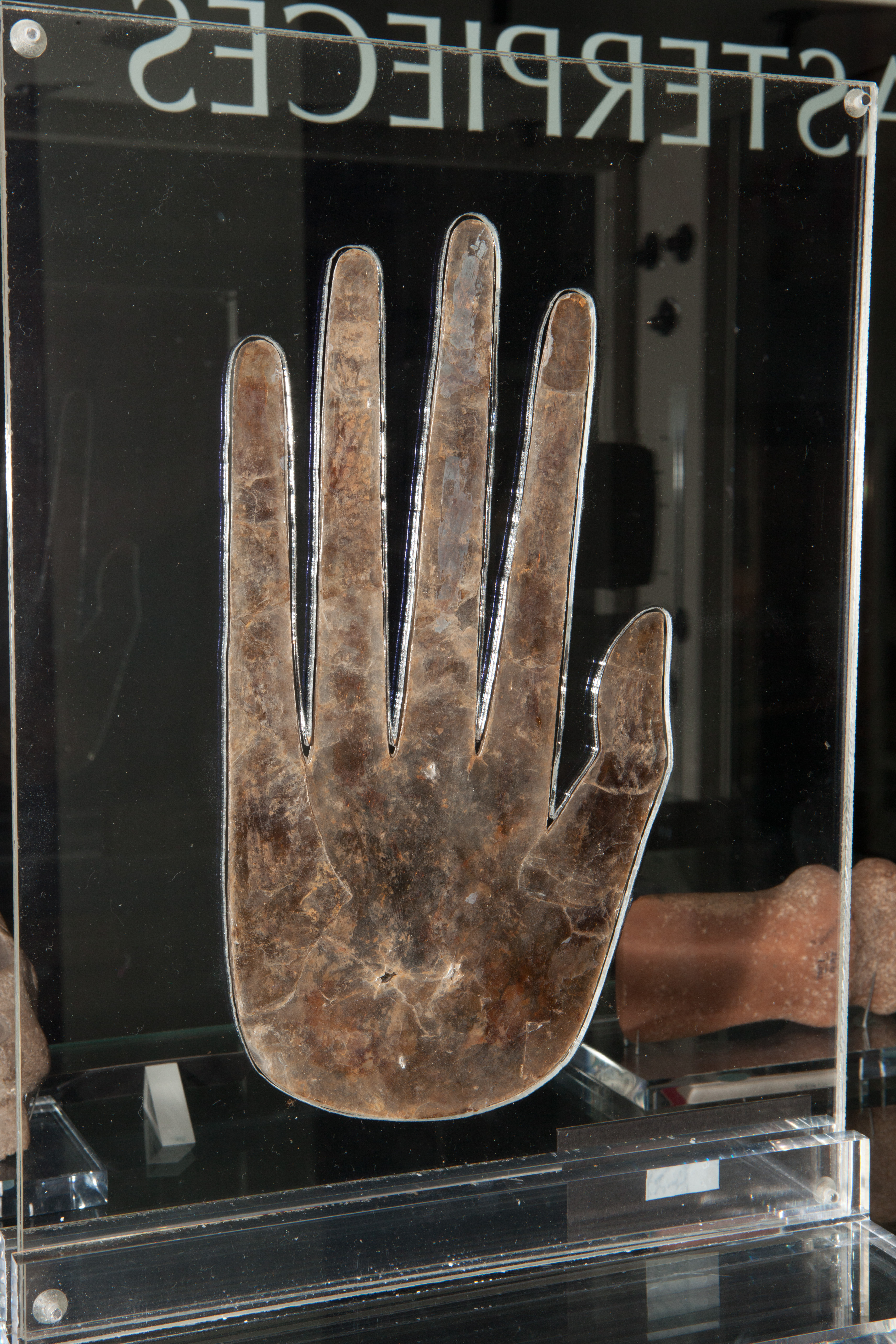
Mound 25, the largest in the Hopewell site enclosure, was composed of the Central Mound and two side mounds that over time, due to additional burials, merged to become one conjoined mound 9 m (30 ft) high and 152 m (500 ft) long. There were a total of 69 copper and (meteoritic) iron celts and 92 copper breastplates found in all the features of this mound. The significance of the better known mica hand placed between the skulls of the double burial and two mica eagle talons which were placed on each chest is not understood. Evidence of incising has been found on one of the mica talons. No pigment is observed on the surface of these artifacts as has been found on painted mica artifacts. The burial also had smaller two mica circular discs, a pierced claw and two other mica geometric forms placed at their waist. The photograph (above right) has the mica replicas positioned as they were found in the Hopewell grave (relative distances between replicas not accurate).

The geographical origins of grave goods from this and other excavations indicated the Hopewell culture had trade sophisticated trade networks extending to the Gulf of Mexico (marine shells), Rocky Mountains (obsidian), and Michigan (native copper). North Carolina is one source of mica where one pre-Columbian mine was reported to have blunt excavation makings on its wall characteristic of stone tools. Cause for the Hopewell culture decline about AD 400 is not known.”Ohio History Connection
In addition to the Human Hand Effigy, there have been thousands of artifacts found from mounds all over the United States including pearls, breastplates, pottery, etc. From page 429 of the Annotated Book of Mormon you will read the following information;
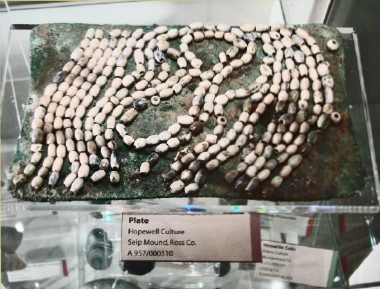
“All Manner of Fine Pearls: The picture on the upper left is of a copper plate with a string of pearls excavated from the Seip Mound located 14 miles southwest of Chillicothe and two miles east of Bainbridge, Ross County, Ohio. Seip Mound is the second largest earthen mound built by the Native American Hopewell people and is listed on the National Register of
Historic Places. Between 1925 and 1928, the Ohio Historical Society excavated Seip Mound. In the book, The Mound Builders, Henry Clyde Shetrone describes the excavations saying, “There were thousands of pearls, from which circumstance newspaper reports at the time designated the interments as the “great pearl burial,” p. 218.
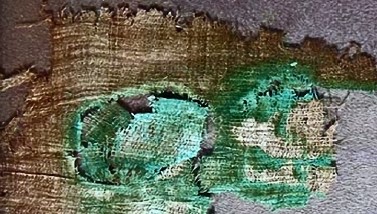
Wearing of Costly Apparel: “Implements and ornaments of copper, mica, tortoise-shell, and
silver were found in profusion. A single individual, an adult male, wore the same type of artificial nose and the copper rod-like hair ornaments found in the double burial of the Hopewell Group. Imprints of an elaborate burial robe were apparent, and beneath and preserved by large copper breastplates accompanying three of the four adults portions of this shroud were well preserved. The burial robe or shroud, of woven fabric, proved to be a unique find in that it bore colored designs.” (The Mound Builders, New York: D. Appleton & CO. [1930], 218-219.)
As you watch these videos below think about the amazing eternal intellect of the Savior. Math as a true science bears witness to all things true in the Gospel and according to the Lord’s plan. It is not simply by random chance that a number such as 1.618 The Golden Spiral is a man made number. I feel a direct influence of the Lord with this important number. It makes sense to me that among the Hopewell, they had this equation and utilized it as they lived their lives. Obviously I don’t know all truth and it is up to the reader to determine the power of this important number on your own. Rian Nelson



